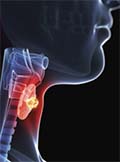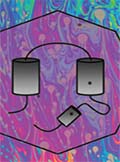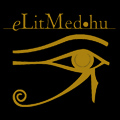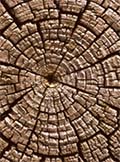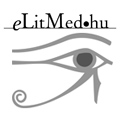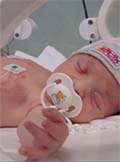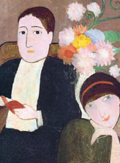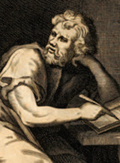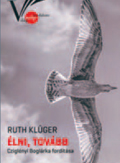The eLitMed.hu medical portal uses computer cookies for convenient operation. Detailed information can be found in the Cookie-policy.
Lege Artis Medicinae - 2016;26(09-10)
Content
[Many faces of thyroid hormone deficiency]
[The timely detection of thyroid hormone deficiency is crucial to inhibit the dangerous consequences of related diseases, such as obesity, cardiovascular diseases, type 2 diabetes mellitus, breast cancer, bone wasting, menstruation disturbance, and goitrogenesis. Subclinical hypothyroidism (<10 mU/l TSH) can initiate the above mentioned symptoms and diseases, therefore its early detection and treatment is necessary. The manuscript details from a practical point of view the causes leading to thyroid hormone deficiency, their consequences and gives recommendation for starting the treatment. The increased occurrence of breast and colorectal cancers associated with thyroid hormone deficiency is explained, and the attention to concomitantly elevated prolactin levels is called. Finally, the paper gives proposals for the clinical practice, when we should think of thyroid hormone deficiency and reports on the algorithm of the treatment of subclinical hypothyroidism recommended by the European Thyroid Association (ETA) in 2013.]
[Basics of the medical use of ayahuasca: physiology of dimethyltryptamine]
[Ayahuasca is a brew made of two admixture plants containing dimethyltryptamine (DMT) and b-carbolines (harmine and tetrahydroharmine). The indigenous groups of the Amazonas basin have been using it for centuries as an ethnomedical substance in healing and spiritual-religious rituals. During the last two decades the brew has raised increased scientific and public interest worldwide about its healing effects. Present paper addresses the therapeutic potentials of ayahuasca use and outlines the cellular mechanisms behind - in focus of the s-1 receptor mediated action of DMT. The scientific investigation of ayahuasca is complicated by methodical problems, legal issues, and sociocultural preconceptions.]
[Physician attitudes concerning complementary and alternative medicine]
[INTRODUCTION - A crucial challenge for XXI. century health care is the presence of complementary and alternative medicine (CAM). A marked question of professional discourse has been characterizing patient CAM use, yet the attitudes, knowledge, and opinions of physicians have received far less attention. METHODS - This qualitative study involves semi-structured interviews conducted with 45 physicians. The narratives were scrutinized by employing Interpretative Phenomenological Analysis (IPA) via Atlas.ti software. RESULTS - The narratives were coded according to attitudes and opinions concerning CAM, and subsequently participants were placed into 3 main groups. The first group is distinguished by a total rejection of CAM (n=11), while at the other end of the continuum, participants integrated biomedicine with CAM therapies (n=8). Those participants in between the two poles (rejection and integration) were characterized as „acceptance with reservations” and signify a heterogeneous category regarding composition and attitudes. COMMENTS - Most participants in our sample belonged to the „acceptance with reservations” category, that is, physicians who do not employ CAM in their praxis, albeit support their patients should they decide to utilize a CAM modality. Our inquiry aims to serve as a precursor to a quantitative study concerning CAM use.]
[Crystal deposition in the background of a thyroid nodule]
[The authors present the findings of thyroid surgery in a patient treated for rheumatoid arthritis. An operation was performed due to the rapidly enlarged thyroid. In addition to the complex developmental anomaly, different crystals were found in the surgical material, which had called attention to the possibly affected mineral metabolism. Actually/Currently, the patient is not suffering from a clinically detectable metabolic disease or arthropathia induced by any crystal. The definitive crystal deposition in tissues, however, calls the physicians attention that the patient in addition to the treatment of the underlying disease should be examined in direction of a possibly developing metabolic disease, and, if necessary, an effective therapy should be used in a very early phase. ]
[Conversation with the relatives]
[In our strong opinion in hospitals the efficient conversation among staff and patient and/or relatives is important. We try to draw attention to the psychosocial aspects of pediatric intensive care and the complex and special case of relative-staff communication via the introduction of a clinical case. Various medical experts were involved in the treatment of the infant and all participants witnessed the 4 months long life and the death of the newborn. The case of the intubed patient was painful and stressful for the medical staff. With our case-report, we try to present the spectrum, which forms during the treatment of a sickly born infant and the changes of the relationship of the medical staff and relatives as well as the engrossment of their interpersonal relationship along with the center of their communication problems and solution-finding. Our paper is centered around the psychosocial aspect of the clinical case and we would like to call the attention on how the medical experts communicated with the parents of the infant. ]
[“Yesterday no longer exists either…” - End-of-life ethical issues in the care of dementia patients]
[The number of dementia patiens is rising. Most of them die in various institutions, often after many years of care. The long process of nursing and care entails particular ethical requirements that are built primarily on vulnerability, dignity, and dia-logue. The dialogue, however, is often absent from the care of dementia patients. Do we find - as physicians, patients, relatives - that specific time when the patients can still make decisions about end-of-life treatments in a good mental state? Most patients would like to participate in these decisions. Talking about these issues in the early stage of dementia may help in the great emotional burden of family members and caregivers. Therefore the ethical aim is the advance care planning (ACP) of the end-of-life treatments. The study reviews the latest scientific results, with special regard to resources that may be helpful in the course of conversations between doctor and patient on end-of-life preferences, and in the preparation for decision making. ]
1.
Clinical Neuroscience
Is there any difference in mortality rates of atrial fibrillation detected before or after ischemic stroke?2.
Clinical Neuroscience
Factors influencing the level of stigma in Parkinson’s disease in western Turkey3.
Clinical Neuroscience
Neuropathic pain and mood disorders in earthquake survivors with peripheral nerve injuries4.
Journal of Nursing Theory and Practice
[Correlations of Sarcopenia, Frailty, Falls and Social Isolation – A Literature Review in the Light of Swedish Statistics]5.
Clinical Neuroscience
[Comparison of pain intensity measurements among patients with low-back pain]1.
Clinical Neuroscience Proceedings
[A Magyar Stroke Társaság XVIII. Kongresszusa és a Magyar Neuroszonológiai Társaság XV. Konferenciája. Absztraktfüzet]2.
3.
Journal of Nursing Theory and Practice
[A selection of the entries submitted to the literary contest "Honorable mission: the joys and challenges of our profession" ]4.
Journal of Nursing Theory and Practice
[End of Life and Palliative Care of Newborns in the Nursing Context]5.
Journal of Nursing Theory and Practice
[Aspects of Occupational Health Nursing for Incurable Patients ]